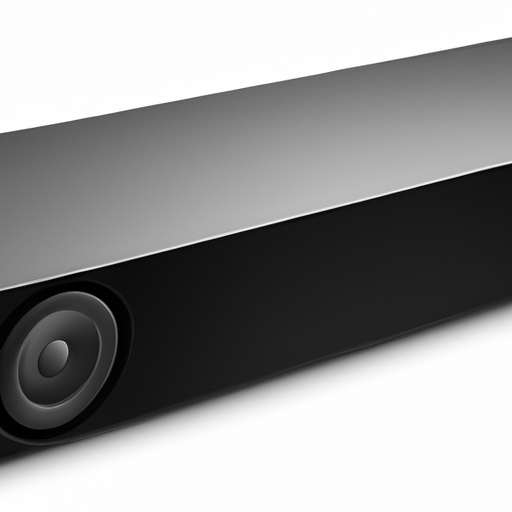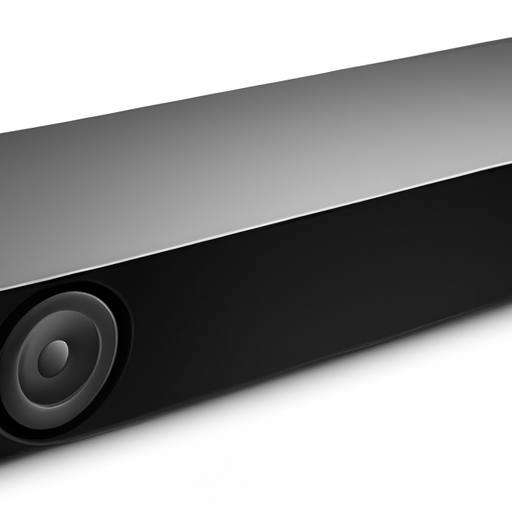
In this article, we explore the advantages and disadvantages of wireless soundbars and whether they are worth the upgrade. We take a closer look at the convenience and flexibility that wireless soundbars offer, allowing you to declutter your space and place them wherever you desire. On the flip side, we examine the potential drawbacks such as connectivity issues and sound quality compared to traditional wired sound systems. So, join us as we weigh the pros and cons of wireless soundbars, helping you make an informed decision on whether it’s worth taking the plunge into the wireless audio world.

Sound Quality
Improved audio performance
Wireless soundbars often offer improved audio performance compared to traditional TV speakers. With advanced technologies, such as Dolby Atmos and DTS:X, they can deliver a more immersive sound experience. The soundbars use multiple built-in speakers and audio processing algorithms to create a surround sound effect, making you feel like you’re in the middle of the action.
Surround sound capabilities
One of the key advantages of wireless soundbars is their ability to create a surround sound experience without the need for multiple speakers placed around the room. Many soundbars use virtual surround sound technology, which mimics the effect of having speakers positioned at different locations. This enhances the audio experience by creating a sense of depth and immersion.
Lack of bass
While wireless soundbars generally offer improved sound quality, some may lack the deep bass response that dedicated subwoofers provide. This is because soundbars have limited space for speaker drivers and may not have a separate subwoofer. However, many models come with built-in subwoofers or offer additional wireless subwoofers for those who desire a richer low-end experience.
Potential for audio lag
One potential drawback of wireless soundbars is the possibility of audio lag, especially when using a Bluetooth connection. Audio lag refers to a delay between the audio and visual content, which can be noticeable and disruptive. However, modern soundbars often include features like lip-sync adjustment to minimize this issue. Additionally, utilizing the soundbar’s Wi-Fi connectivity instead of Bluetooth can help reduce audio lag.
Convenience
Easy setup and installation
Setting up a wireless soundbar is generally hassle-free. Most soundbars come with user-friendly manuals and include all the necessary cables and mounting hardware. Additionally, they often have a straightforward interface that guides users through the installation process step by step. In no time, you can enjoy enhanced audio without the complexities of traditional speaker setups.
Wireless connectivity
One of the main advantages of wireless soundbars is their ability to connect to devices wirelessly. Bluetooth technology allows you to effortlessly stream music, podcasts, and other audio content from your smartphone, tablet, or computer. Some soundbars also support Wi-Fi connectivity, providing access to additional streaming services and the ability to control your soundbar through a dedicated app.
Flexibility in placement
Unlike traditional home theater systems, wireless soundbars offer great flexibility in terms of placement. They are compact and slim, making them suitable for a variety of rooms and setups. With options to wall-mount, place on furniture, or even position beneath the TV, you can find the ideal placement that suits your preferences and room aesthetics.
Reduced clutter
With a wireless soundbar, you can say goodbye to the tangle of wires and cables that often come with traditional speaker setups. This not only reduces visual clutter in your entertainment area but also makes it easier to clean and maintain. You can achieve a clean and organized look while enjoying an improved audio experience.
Compatibility
Wide range of connectivity options
Wireless soundbars are designed to accommodate various connectivity options, ensuring compatibility with different devices. They commonly feature HDMI inputs and outputs, which allow for seamless integration with your TV and other audiovisual components. Additionally, they may offer optical, coaxial, and analog inputs, enabling connection to devices such as gaming consoles, Blu-ray players, and more.
Compatibility with multiple devices
Another benefit of wireless soundbars is their compatibility with multiple devices. Whether you want to enjoy a movie from your TV, stream music from your smartphone, or play a video game on your console, you can easily connect and switch between devices. This versatility makes wireless soundbars suitable for various entertainment scenarios, catering to a wide range of user needs.
Integration with smart home systems
Wireless soundbars often integrate seamlessly with smart home systems, allowing you to control them using voice commands or through a dedicated app. This opens up a whole new level of convenience, letting you adjust settings, switch inputs, and stream content effortlessly. With compatibility with voice assistants like Amazon Alexa or Google Assistant, you can create a truly connected entertainment ecosystem in your home.
Cost
Initial investment
Wireless soundbars can vary greatly in price depending on their features, audio quality, and brand reputation. While some entry-level models can be quite affordable, high-end soundbars with advanced technology and superior sound performance can be more expensive. The cost of upgrading to a wireless soundbar will depend on your budget and desired level of audio quality.
Additional expenses
In addition to the initial investment in a wireless soundbar, there may be additional expenses to consider. For example, if the soundbar doesn’t have a built-in subwoofer, you may want to purchase one separately to enhance the low-end frequencies. Additionally, if you desire a true surround sound experience, you might need to invest in additional wireless rear speakers. It’s important to factor in these potential expenses when evaluating the overall cost.
Value for money
When considering the cost of a wireless soundbar, it’s essential to assess the value for money it provides. While higher-priced models may offer advanced features and superior audio quality, they may not be necessary for everyone. It’s important to consider your specific audio needs, budget, and desired level of performance to determine whether the investment in a wireless soundbar is worth it for you.
Design
Slim and sleek profile
Wireless soundbars are known for their slim and sleek profiles, which complement modern TVs and fit seamlessly into most living spaces. They are designed to be aesthetically pleasing, with a minimalistic and streamlined appearance. Whether you choose to mount it on the wall or place it on a stand, a wireless soundbar can add a touch of sophistication to your entertainment area.
Minimalistic appearance
If you prefer a clean and uncluttered look, wireless soundbars are an excellent choice. They typically have a minimalistic design, with a focus on simplicity. Many models come with a single, seamless grille that covers the entire front surface, creating a sleek and uniform look. This minimalistic appearance allows the soundbar to blend in effortlessly with your home decor and enhances the overall visual appeal of your entertainment setup.
Variety of color options
To cater to different personal preferences and interior design styles, wireless soundbars often come in a variety of color options. You can choose a color that matches or contrasts with your TV, furniture, or wall color. Whether you prefer a classic black, a modern white, or even a vibrant color, there is a soundbar option available to suit your tastes and complement your home decor.
Limited Power Output
Potential for lower audio volume
Due to their compact size and slim profiles, wireless soundbars may have limited power output compared to dedicated speakers or home theater systems. This can result in lower audio volume, especially in larger rooms. However, most wireless soundbars offer adjustable settings to optimize the sound output according to your room size and personal preferences.
Lack of performance for larger rooms
While wireless soundbars can enhance the audio experience in smaller to medium-sized rooms, they may not provide the same level of performance in larger rooms. The sound may not reach every corner of the room with the same clarity and power. For those with larger entertainment spaces, additional speakers or a dedicated home theater system might be more suitable to achieve the desired sound coverage and volume.
Connectivity Issues
Interference from other devices
Wireless soundbars, particularly those utilizing Bluetooth connectivity, may be susceptible to interference from other wireless devices. This interference can result in audio dropouts or distorted sound. However, modern soundbars often employ advanced Bluetooth technology and frequency-hopping mechanisms to minimize interference and provide a stable connection.
Reliance on Wi-Fi network stability
For soundbars that support Wi-Fi connectivity, a stable and strong Wi-Fi network is essential for proper performance. Weak or unreliable Wi-Fi signals can lead to interruptions in audio playback or buffering issues. It’s important to ensure that your Wi-Fi network is robust and properly set up to prevent connectivity issues with your wireless soundbar.
Upgradability
Flexibility to add more speakers for enhanced sound
One of the advantages of wireless soundbars is their ability to expand and upgrade. Many models offer the option to add additional wireless speakers to create a more immersive and complete surround sound setup. By adding rear speakers or a dedicated subwoofer, you can enhance the audio experience and customize it to suit your preferences and room acoustics.
Compatibility with future technology advancements
Wireless soundbars are generally designed to be compatible with future technology advancements. This ensures that you can enjoy the latest audio formats, streaming services, and connectivity options without needing to replace your entire sound system. Investing in a wireless soundbar allows for future upgrades and integration with evolving entertainment technologies.
Ease of Use
User-friendly interfaces
Wireless soundbars are designed with user-friendliness in mind. They typically feature interfaces that are intuitive and easy to navigate, allowing you to adjust settings and control playback effortlessly. Many even come with remote controls or smartphone apps that provide additional convenience and accessibility.
Convenient control options
In addition to traditional remote controls, wireless soundbars often support convenient control options. For example, some models can be integrated with your TV’s remote control, allowing you to control both devices with a single remote. Others offer voice control compatibility, enabling you to adjust settings or play music using voice commands through voice assistants like Amazon Alexa or Google Assistant.
Conclusion
Consideration of personal preferences
When it comes to wireless soundbars, the decision to upgrade ultimately depends on personal preferences and specific audio needs. Consider factors such as desired sound quality, budget, room size, and compatibility with existing devices. Evaluating your priorities and weighing the pros and cons will help you make an informed decision that aligns with your preferences.
Weighing the pros and cons
Wireless soundbars offer numerous benefits, such as improved audio performance, easy setup, and wireless connectivity. They provide flexibility in terms of placement and compatibility with various devices and smart home systems. However, they may have limitations in terms of power output, potential connectivity issues, and additional expenses. By carefully considering these pros and cons, you can determine whether a wireless soundbar is worth the upgrade for your home entertainment setup.
